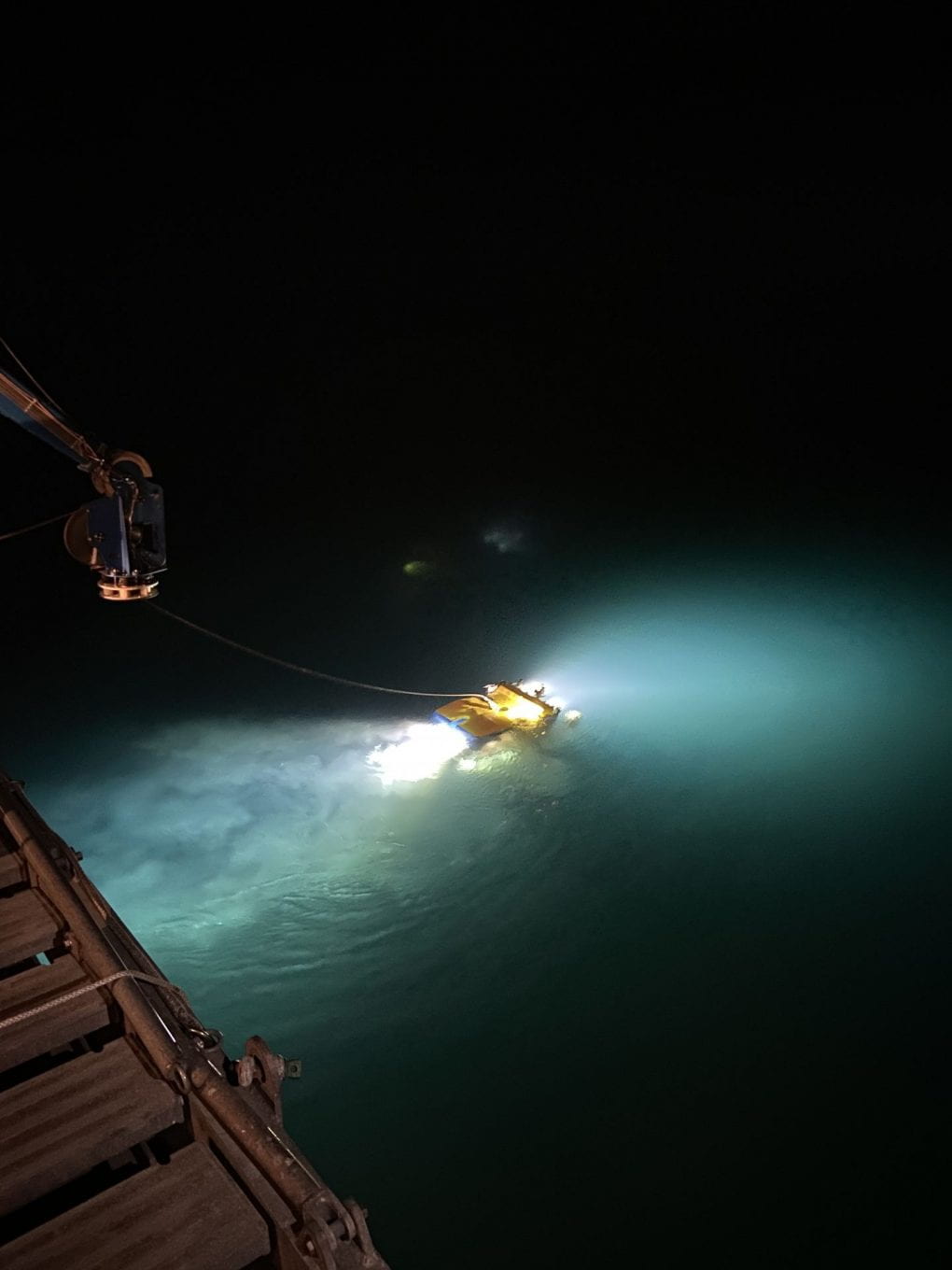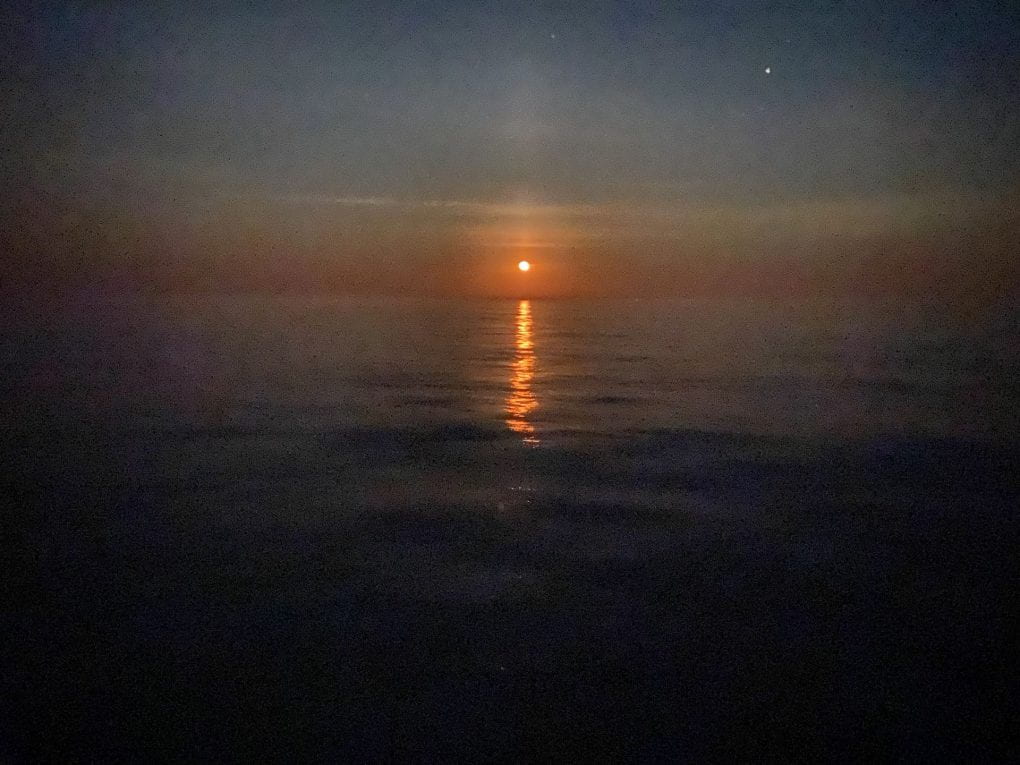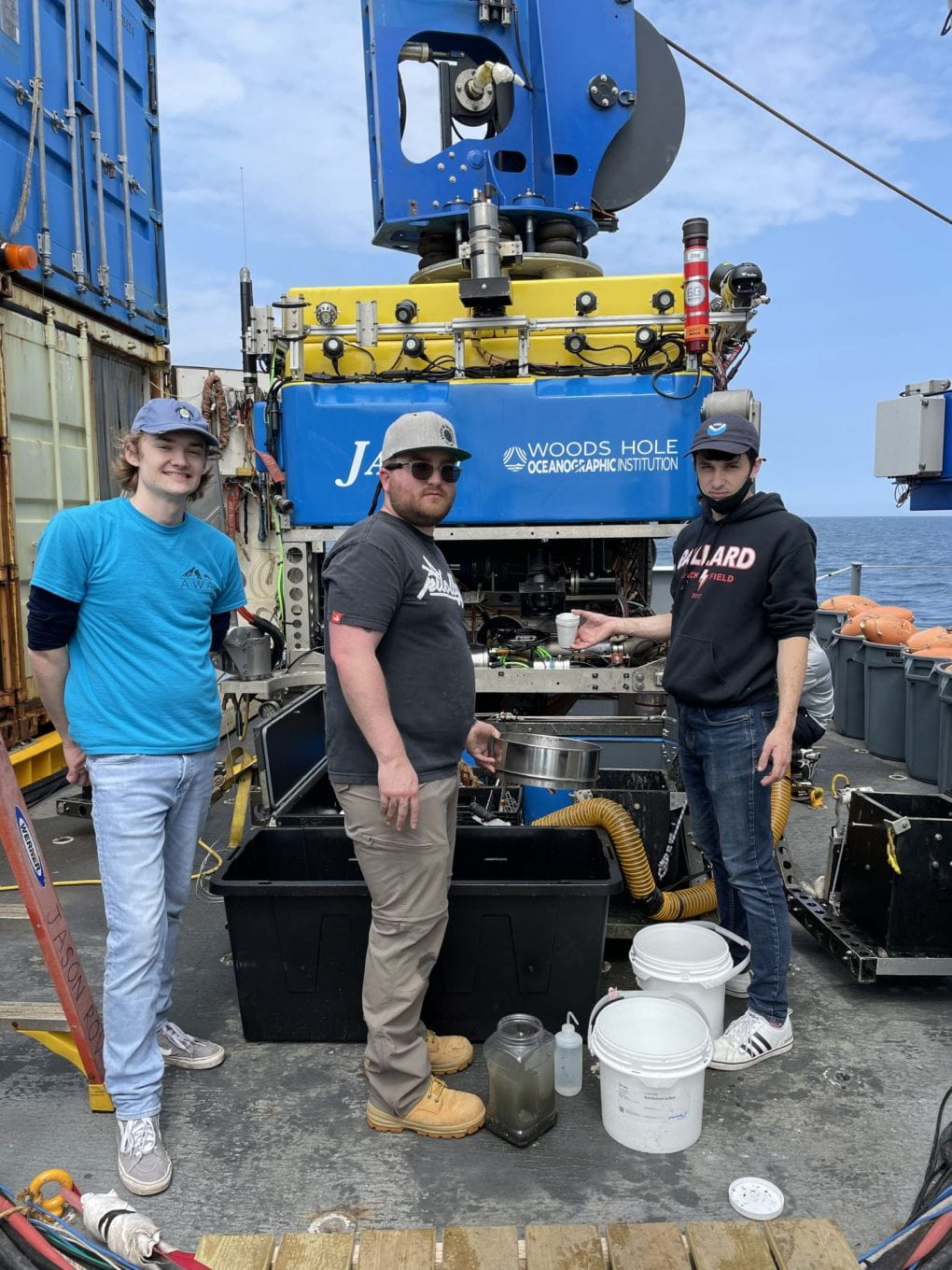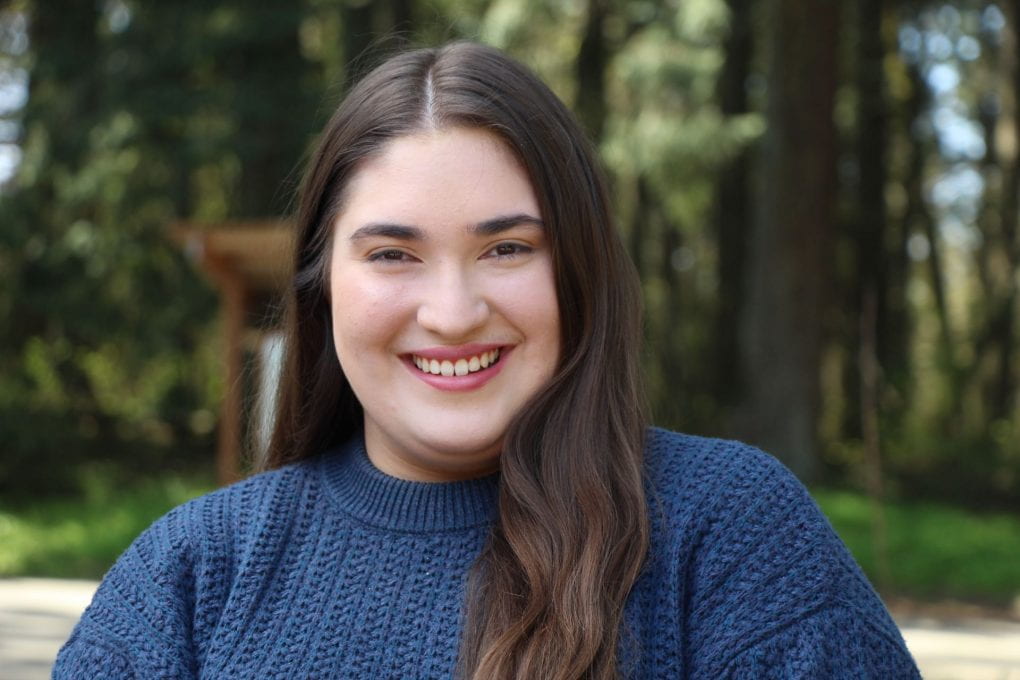
May 28th, 2021
At 12:00am, Jason managed to finally get into the water and began a 12-hour dive at Baltimore Canyon. Since the vehicle is remotely operated, longer dives are possible, and science is done on 4-hour shifts. There’s a 12-4 shift done by Caitlin, Tessa, and Ian, a 4-8 shift by Sinja, Lauren, and Avery, and a 8-12 shift by Shawn, Dexter, and Mitch, both AM and PM shifts. This ensures science goals can be met around the clock efficiently with no one getting too tired or hungry. The pilots also exchange during shifts.
Seen in this picture above, Jason is lifted off the boat by a winch that lowers it into the water, and keeps a cable connected for control. This cable has buoys attached to it as Jason descends, to ensure the cable floats above Jason and does not tangle while Jason is moving. There is also a sensor attached on the cable that communicates with the control room when to reel in or let out the winch and allows the ship to move back and forth without tugging on Jason.
Once Jason has completed the dive, the scientists get ready to bring in the recovered science equipment, collected mussels and carbonate rock. We have to act quickly before anything is lost due to the changing water and temperature from coming to the surface. We have teams for the various tasks that need to be done to ensure everything is done in a timely manner and before another dive is completed.
Seen here is the slurp and sieving team. During the dive, our recovered science is put into “bio boxes” in the basket on Jason. This team siphons out all of the residual water and sediment from these boxes, as well as the “slurp” samples collected by Jason’s vacuum hose, and sieves it down to 250 microns to catch any larvae found at the site. Some scientists react differently when asked for a photo op! With the results of the sieve, this sediment will be sorted through under the microscope to locate the larvae of target species, notably the pink shelled mussels.
Meet a Scientist on Board
Hi! My name is Carmen Sanchez-Reddick, and I am an undergraduate marine biology student and member of the Young lab at the Oregon Institute of Marine Biology. Usually, you can find me counting oocytes in tunicate specimens for my undergraduate thesis, making breakfast for the residents of the Charleston Marine Life Center, or working on homework in the library. This is my first ever, but hopefully not last, research cruise, and it has been an incredible experience thus far. Watching Sentry and Jason deployments, laughing with new friends, and eating delicious food have become constants in my day-to-day routine and have kept me going during bouts of sea sickness. I’ve spent most of my time sorting larvae, and I hope to be able to distinguish larvae, egg casing, and dirt by the end of the cruise!
With the first Jason dive of the cruise, the scientists have their hands full! The delay in blog posts has been due to the hard-work of everyone on board. In addition to sorting through the sieved sediments, adult mussels are to be dissected, juveniles measured, sipunculan traps opened and counted, animals need to be organized and put into the cold room and given proper housing, carbonate rock needs to be assessed for sponges, among many other tasks. As we continue through this cruise we will explain all these tasks and what purpose they serve in answering our research questions, stay tuned!


